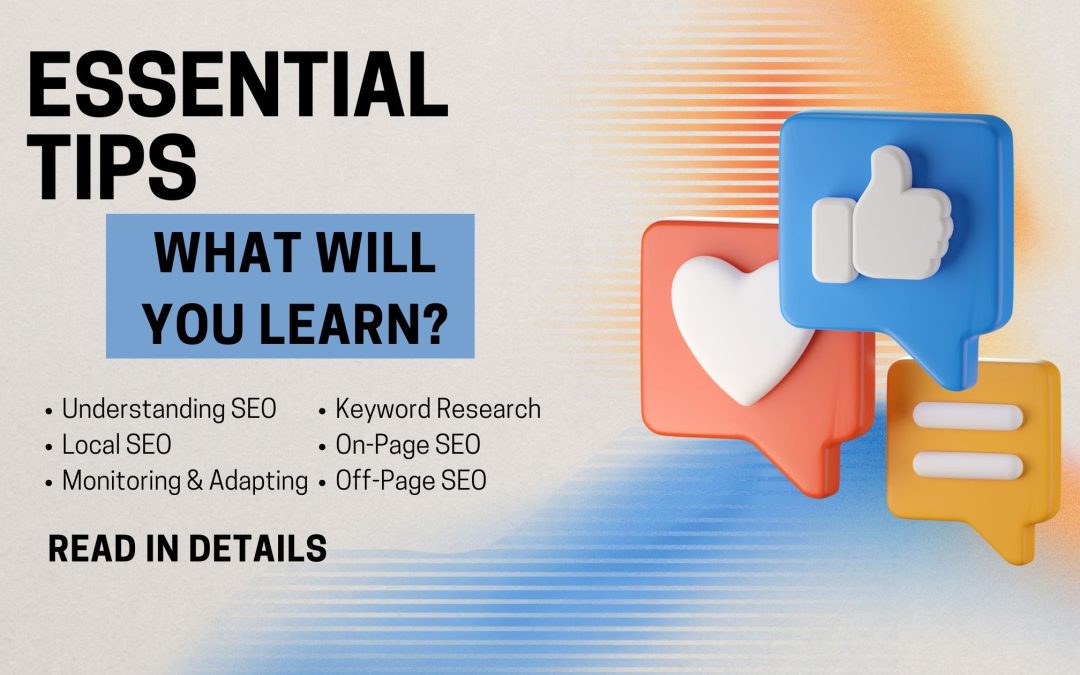In the digital age, a robust online presence is crucial for the success of any small business. Search Engine Optimization (SEO) is the toolkit that helps your business climb the search engine ranks and become more visible to potential customers. But with ever-changing algorithms and technical jargon, it can feel overwhelming. Fear not—we’re breaking down SEO strategies into simple, actionable steps that you can start applying today.
Understanding SEO: The Basics
SEO is a collection of techniques used to increase the quantity and quality of traffic to your website through organic search engine results. The goal is to rank higher on search engine results pages (SERPs), ideally on the first page, as this is where most user clicks go.
Keywords are the foundation of SEO—they are the terms and phrases that searchers enter into search engines. Your first task is to identify the keywords that are relevant to your business and that potential customers are likely to use when looking for your products or services.
Keyword Research: Where to Begin
Keyword research involves identifying terms that are important for your business and optimizing your content around them. Here’s how you can get started:
Brainstorm ‘seed’ keywords: Think about the basic terms related to your business and what you offer. For example, if you sell handcrafted jewelry, your seed keywords could be “handmade jewelry,” “artisan necklaces,” or “custom bracelets.”
Use keyword research tools: Tools like Google Keyword Planner, SEMrush, or Ahrefs can provide insights into the search volume and competition level for your chosen keywords.
Consider search intent: Understand why someone would search for a particular keyword. Are they looking to buy (“buy handmade jewelry”), seeking information (“how to clean silver jewelry”), or comparing products (“handmade vs. factory-made jewelry”)?
Long-tail keywords: These are longer and more specific keyword phrases. They tend to have less competition and can drive more qualified traffic. An example could be “affordable handcrafted silver necklaces.”
On-Page SEO: Optimizing Your Content
Once you have your keywords, it’s time to optimize your website’s content:
Title Tags and Meta Descriptions: These HTML elements define your page titles and descriptions on SERPs. Include relevant keywords while making them compelling to encourage clicks.
Headings and Subheadings: Use H1, H2, and H3 tags to structure your content. Not only do they make your content reader-friendly, but they also help search engines understand the hierarchy and relevance of your information.
Content Quality: High-quality, original content is king. It should provide value to your readers and answer their questions. Include your target keywords naturally within your text.
Images and Alt Text: Optimize your images by compressing them for faster loading times and using alt text to describe the image with relevant keywords.
Off-Page SEO: Beyond Your Website
SEO isn’t just about what’s on your site; it’s also about how your site is perceived by the outside world. This involves:
Backlinks: Links from other reputable websites to yours are like votes of confidence. They can significantly improve your site’s authority and credibility.
Social Sharing: While social media may not directly affect your SEO, content shared across these platforms can enhance exposure and lead to natural backlinking.
Online Directories and Reviews: List your business in relevant online directories and maintain a positive review profile, which can impact your local SEO significantly.
You can read more about The Key To Effective SEO
Local SEO: Capturing the Local Market
If your business has a physical location or serves a specific area, local SEO is vital. It includes:
Google My Business: Ensure your Google My Business profile is up-to-date with accurate information, as this affects how you appear in local searches and Google Maps.
Local Keywords: Include location-based keywords in your content and metadata, like “jewelry shop in [City Name].”
Local Link Building: Gain backlinks from local businesses and organizations to bolster your local presence.
Monitoring and Adapting: The SEO Journey
SEO isn’t a one-time setup; it’s an ongoing process. Regularly monitor your site’s performance using tools like Google Analytics and Google Search Console. Adapt your strategies based on what the data tells you. Implementing these SEO strategies can significantly improve your online visibility and attract more traffic to your website. Remember, SEO takes time, and results won’t happen overnight, but with consistency and patience, your small business can see substantial growth in the digital space.

